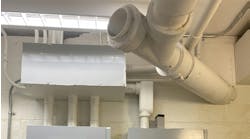In Sec. 480.7(A) of the 2017 National Electrical Code (NEC), there is a requirement for a disconnecting means to be located at a readily accessible location within sight of the battery system. What if we want to install the battery disconnecting means in another room ― out of sight of the batteries ― and just install a control circuit and pushbutton in the battery room to operate the disconnecting means? Let’s say that the disconnecting means is lockable in the OFF or OPEN position as required by Sec. 110.25. Would this equipment arrangement violate the NEC?
You can easily misinterpret Sec. 480.7(B) if you read through it quickly. Let’s review it together now.
“480.7(B) Remote Actuation. Where a disconnecting means, located in accordance with 480.7(A) is provided with remote controls to activate the disconnecting means and the controls for the disconnecting means are not located within sight of the stationary battery system, the disconnecting means shall be capable of being locked in the open position, in accordance with 110.25 and the location of the controls shall be field marked on the disconnecting means.”
This language may seem to allow the scenario I proposed in my opening paragraph. However, it does not. Section 480.7(B) requires the battery disconnecting means to be located within sight of the batteries. A remote-control pushbutton, for instance, could be installed remotely from the battery room to operate the disconnecting means located within sight of the batteries, but not vice-versa.
© 2018 Fluor Corporation. All Rights Reserved.




